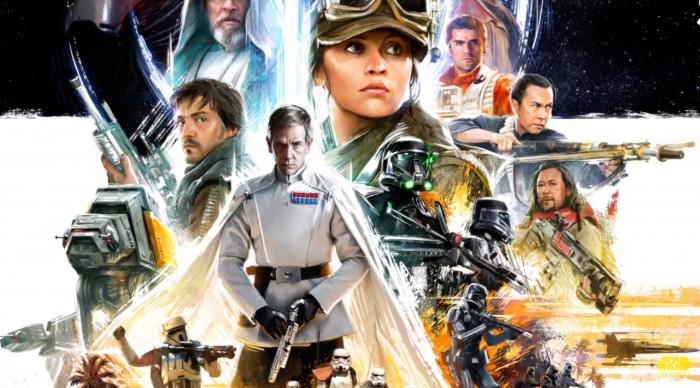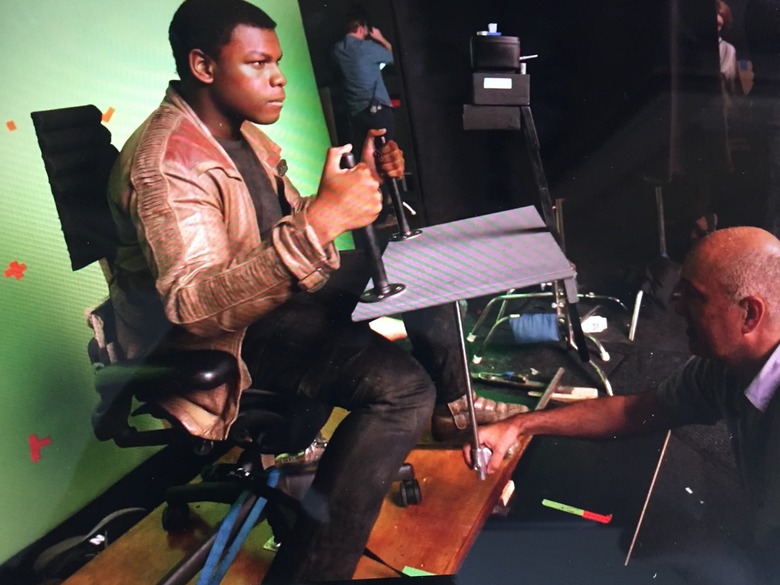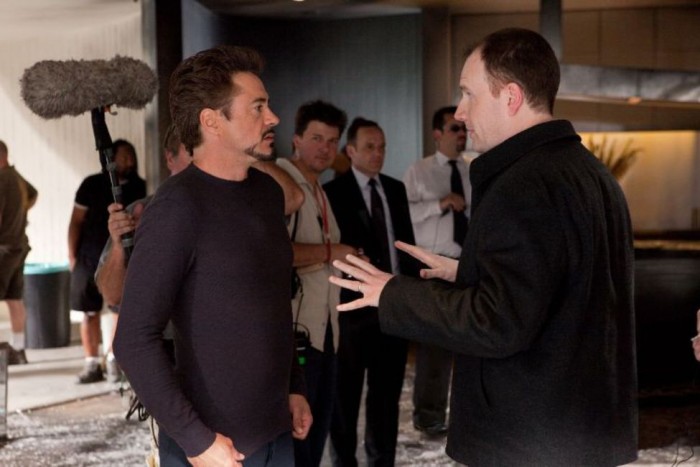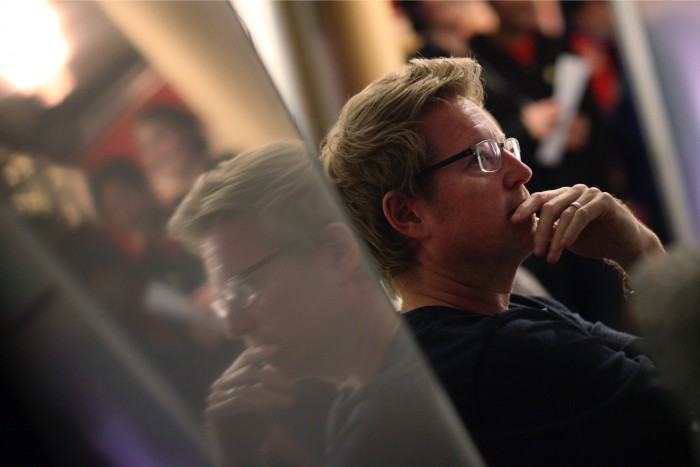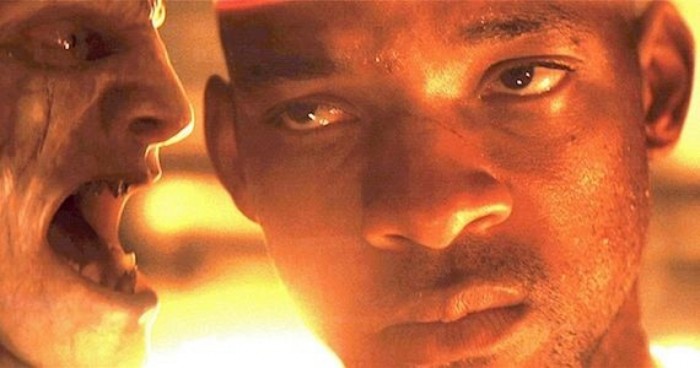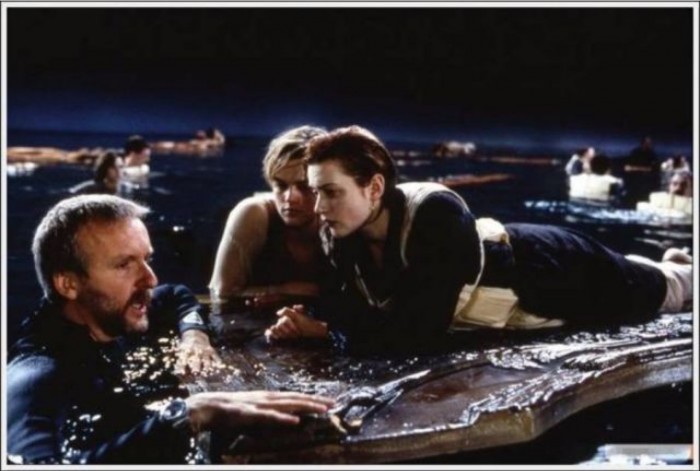Why Movie Reshoots Aren't Necessarily A Bad Sign
"Reshoots" is a dirty word in entertainment journalism, often used as an indicator of a disastrous film production. But the truth of the matter is, reshoots can be a good thing. The purpose of reshoots is to make a movie better, not worse. Let's take a look at the purpose of reshoots, and why they don't necessarily signal disaster for films like Star Wars: Rogue One and Suicide Squad.
Many of the films you love went through reshoots. My favorite movie of all time, Back to the Future, shot five weeks with one lead actor (Eric Stoltz) before director Robert Zemeckis admitted it wasn't working and recast the role of Marty McFly with Michael J. Fox. That film went through extensive reshoots, and ended up being one of the best films of all time. Likewise, the ending of Rocky was reshot, and E.T. originally died in that government test facility before test screenings convinced Steven Spielberg to go into reshoots and come out with the now-iconic ending.
Most of the time it is not the studio that requests reshoots, but the filmmaker. Generally the filmmaker and producers are the ones that need to argue for more money from the studio to improve their film.
"I think about 75% of the movies I produced had reshoots, and the 25% without reshoots would have had reshoots if budget and schedule allowed," says You're Next/Anomalisa producer Keith Calder. "100% of the movies I've produced that had reshoots were improved by those reshoots. Feel free to ask the directors."
Another film that has been the subject of reshoot speculation in the media recently is Warner Bros.' Suicide Squad. Director David Ayer has debunked reports of the studio meddling with his vision and has explained why reshoots aren't a bad thing:
"I don't think there's any director that finishes a movie and says, 'Wow that's perfect, that's what I really want it to be." Ayer told Collider. "Every movie I've ever made I wish I could go and grab some additional stuff and that's exactly the chance I got this time. It's like getting a new car but you get fancy rims and a new stereo."
And reshoots aren't limited to big budget studio films. They also happen with smaller films.
"I see stories about movies having weeks of reshoots, and my first reaction is 'I wish we could afford weeks of reshoots for our movies,'" tweeted Calder. "Reshoots are a hugely useful part of the filmmaking process, and fear of reshoots has ruined plenty of potentially good indie movies."
The Reality of the Rogue One Reshoot Reports
Recently there has been a lot of speculation about the Rogue One: A Star Wars Story reshoots. Depending on which source you believe, they're either an attempt to make a good film great by altering the tone to be more in line with A New Hope, or a massive months-long ordeal to fix a disaster. I'm not going to pretend to know what's going on here, as I'm not privy to the behind-the-scenes going-ons of this production. But experience has told me that the truth is much more likely in the middle of the two extremes.
While I believe extended reshoots are a significant development worthy of being reported on, they should not necessarily be looked at as a sign that a film is doomed. Calder offers that the negativity towards reshoots "is fostered by the film press, film schools, and general culture around art that artists must get it right the first try."
"Maybe a lot of people see reshoots the same way they see auto recalls: like the film was out the door before getting pulled back inside," tweeted film journalist Scott Beggs, who wonders why "'We're not satisfied yet, so we want to spend time/$$ to improve the product' somehow equals 'disaster' when it's call[ed] 'reshoots.'"
If a studio is spending more money on reshoots, it's because they have confidence they can get it right. Remember, reshoots cost money. And extensive reshoots can cost a considerable amount of money. How much money does a movie studio have to spend before they decide it's "good enough"? At what point does a movie studio decide to cut its losses on a big-budget film and not approve reshoots?
Some of Your Favorite Things in The Force Awakens Were Reshot
In fact, Star Wars: The Force Awakens went through a number of reshoots and additional photography, most of which went under the radar due to being conducted in JJ Abrams' mystery box of the Bad Robot offices. Big moments from the film were reshot in spaces inside the Santa Monica-based production company, and on the roof of the headquarters. While we see behind-the-scenes footage of Daisy Ridley and John Boyega acting in huge moving rigs on gimbals, the truth of the matter is a lot of that footage didn't even make it into the final film. Instead you're watching reshot footage with the actors sitting in an office chair in front of a green screen in a small room in Bad Robot (see image above).
"When I was on the set of the Millennium Falcon and we started to do work with Rey and Finn, the first time we did it, it didn't work at all," Abrams said at the Tribeca Film Festival. "It was much more contentious. I didn't direct it right."
Harrison Ford's injury allowed Abrams to "rewrite quite a bit of that relationship."
"We actually just reshot from the ground up, those scenes. It was an amazingly helpful thing to get these two characters to where they needed to be."
As Isaac told Rolling Stone, many of the moments that people love from The Force Awakens, including much of the material involving Oscar Isaac's Poe Dameron, were the result of reshoots:
"All of the funny lines – including one about Poe being unable to hear Adam Driver's Kylo Ren through his helmet, and the "who talks first" exchange – were added in reshoots, and Isaac improvised some of them. He's always pushing to complicate and deepen Poe, who started as little more than a charming archetype. "We're making s*** up as we go."
Reshoots Are Often Expected and Planned For
Marvel head Kevin Feige explained to Badass Digest in June 2012 why reshoots are important:
"Additional photography is invaluable. Sometimes it's to fix something that's not working, but most of the time on our movies it's two-fold: sometimes a better or more exciting idea will come along, or more often something will come out of the movie – because it's too long or the movie is stronger without a particular beat or scene or shot, and you need connective tissue."
Most big-budget studio films and smart producers build reshoots into their initial budget. It's all part of the plan. Marvel Studios budgets two weeks of reshoots into all of their film productions, Feige explained:
"We've done some movies that have three days of reshoots, some that have fifteen days, twenty days if not more. Sometimes we know what we need by that point and sometimes we're wrangling them anyway. There's a shot in Thor: The Dark World we call the Three Continent shot. It's one shot, with three different actors in it, that was done on three different continents."
Reshooting a Movie 4 or 5 Times: The Secret to Pixar's Sucess
Every filmmaker at Pixar will tell you that they make and remake their film over the five-year development process, often massively retooling the story late in the process. Pixar films like Toy Story and Ratatouille were almost completely "reshot" late into the development process. Here is a quote from Finding Nemo/WALL-E director Andrew Stanton (from July 2011) telling me why the iterative process of making a Pixar movie is the secret to the company's success:
"You can put it all up in drawing form that you're not going to keep, in the grand scheme of things it's a cheap way to make something. You draw it, you put your own voice on it, you cut it, and you don't like it, and you do it again. You do it every 6 months over 3 to 4 years. Every time you do that, that's the equivalent of a reshoot, so I've been taught how to make a movie with 4 reshoots built in every time. And you wonder why our movies are good? It's not because we're smarter, it's not because we're better, it's because we are in a system that recognizes that you don't go, 'Oh my god, okay, I'm going to paint this, but I can only touch the brush once and I'm only going to make one stroke. That stroke's asked, and we're done; we're not making this painting.' I get to try it, play it, don't like that, play it again, no, play it again, record it — most creative processes allow for somebody to go off into their shack, their studio, their recording booth, and try stuff until they figure it out and find it."
I think we can all agree that most Pixar movies turn out to be special, remarkable contributions to cinema. Stanton made his live-action debut with John Carter, a film which was heavily criticized in the media for having to undergo extensive reshoots. Here he talks about the inherent problem of the live-action filmmaking process.
"It is such an expensive way to make something creative. People freak, and they want to hold it all in. They want to say, 'Can you be really smart and think about it some more and plan some more? Just do it once. Or maybe twice.' Most places now aren't even letting you think about it; they're like, 'Just do it! Maybe you'll luck out.' We planned the bejesus out of it here. ... I tried to be as smart as I could and raise the bar as high as I could with the script before we went shooting knowing I wasn't going to get these same iterations, then tried to be as smart as I could about doing the reshoots. It's still less than what I'm used to."
And with a studio like Pixar, you have most of the same talent in-house to get to work on changes. But the live-action reshoot process is expensive because of scheduling and logistics.
"It's such a gypsy culture," Stanton explains. "You don't get to keep the same people. They're not in that building; you can't grab them on a Thursday and go, 'What if we do this?' All your actors are gone off. It's a real conundrum, and believe me, ... there's huge room for improvement. It's a gnarly problem; I get it."
Sure, Reshoots Can Make a Movie Worse
Just because reshoots aren't necessarily a bad thing doesn't mean they are a good thing. I would argue that massive reshoots are financially and artistically irresponsible, especially if they are the result of things that could have been fixed or worked on during development of the project.
And yes, there have been a good number of films that went through extensive reshoots and are universally considered to be bad, and some that are considered worse off because of the meddling. For example, the original ending for I Am Legend tested badly with audiences and the studio went back and filmed an ending that film journalist Charlie Jane says "undermines the entire message of the film but includes a big explosion" rather than an ending that is more like the one seen in the book.
Not All "Disasters" Are Disasters
You have to understand that the filmmaking process is a complicated one, and many films that were deemed possible disasters during production have turned out to be critical and box office successes. Here is an excerpt from a 1997 article from the New York Times:
The likelihood that ”Titanic,” the costliest film ever made, will delay its opening, previously set for the July 4 weekend, is sending ripples across Hollywood and turning the summer season into turmoil. ... Rumors had been proliferating for more than a week about the problems facing ”Titanic,” which had been set to open on July 2, the start of one of the biggest moviegoing weekends of the year. Daily Variety began running a ”Titanic Watch.” At issue was the completion of the special effects for the film, for which a five-story copy of the ill-fated luxury liner had been built and as many as 1,000 extras and a crew of more than 800 — which is probably a record number — had been working virtually around the clock.
As you know, despite going 22 days over budget, Titanic ended up becoming one of the highest grossing films of all time.

